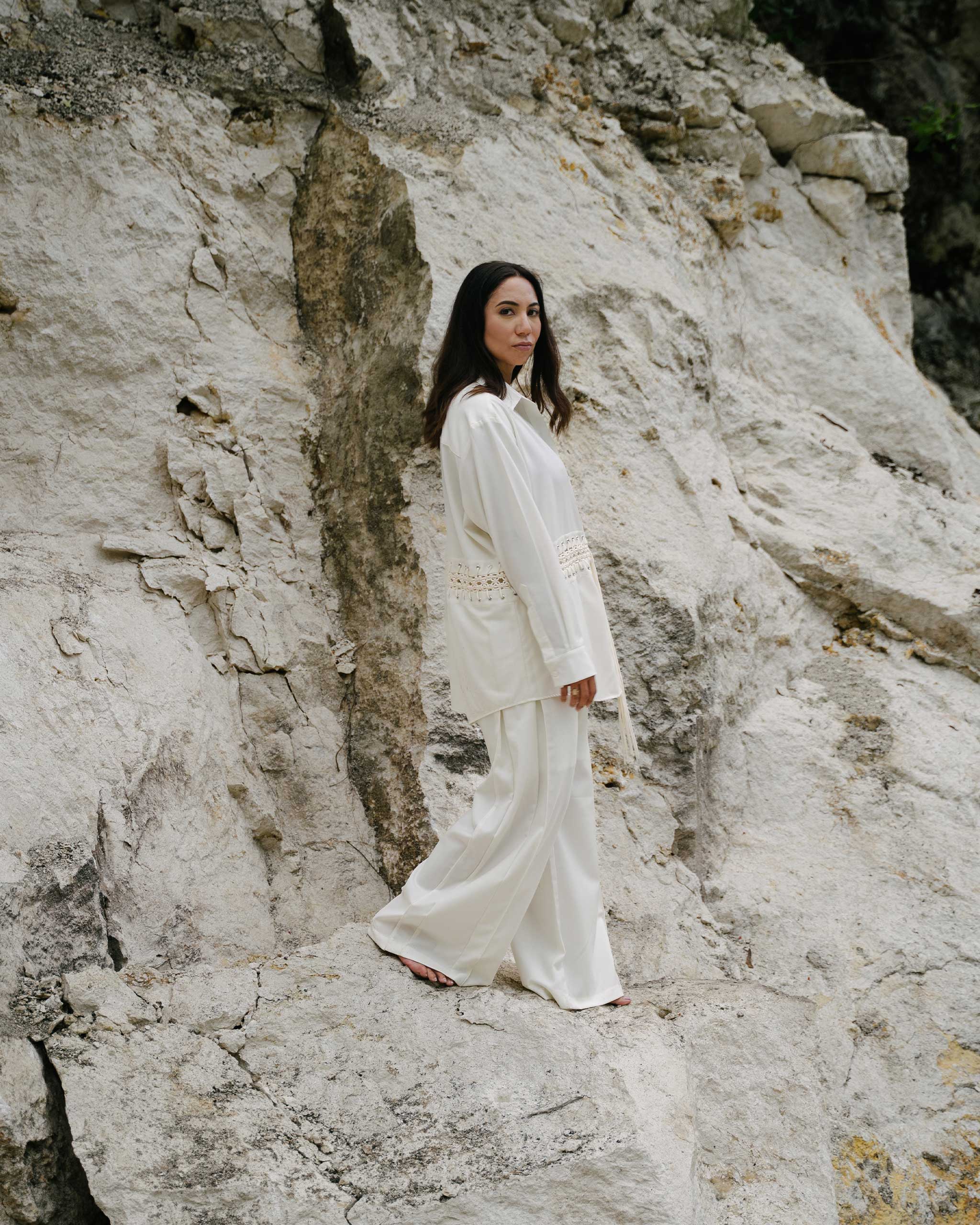Photo by Dani Bautista
“We have the opportunity to reintroduce the world to fossil stone furniture,” says Steffanie Ball. “This time we’re going to really make it known and clear that this is a native Filipino material, only found in Cebu, nowhere else.”
In the 1980s, a design trend took over the living rooms of many homes in Europe and the United States—furniture, usually coffee tables with rounded bases or geometric postmodern edges in what is sometimes called travertine or tessellated stone. Its textured surfaces, in neutrals or sometimes pinkish colors, add a bold, yet organic element to a space. This fossil stone look that has found a new market as ’80s décor seems to be making a comeback, a reaction to the minimalist reign of midcentury modern.
One of the major proponents of tessellated stone furniture was Maitland Smith, an American furniture company that opened a manufacturing base in Cebu in the early ’80s, reproducing neoclassical designs using a unique stone tile inlay technique. But they were far from the only ones. From the island of Mactan, fossilized limestone was extracted and used to make these coveted pieces; Filipinos would know these rocks as Mactan stone.
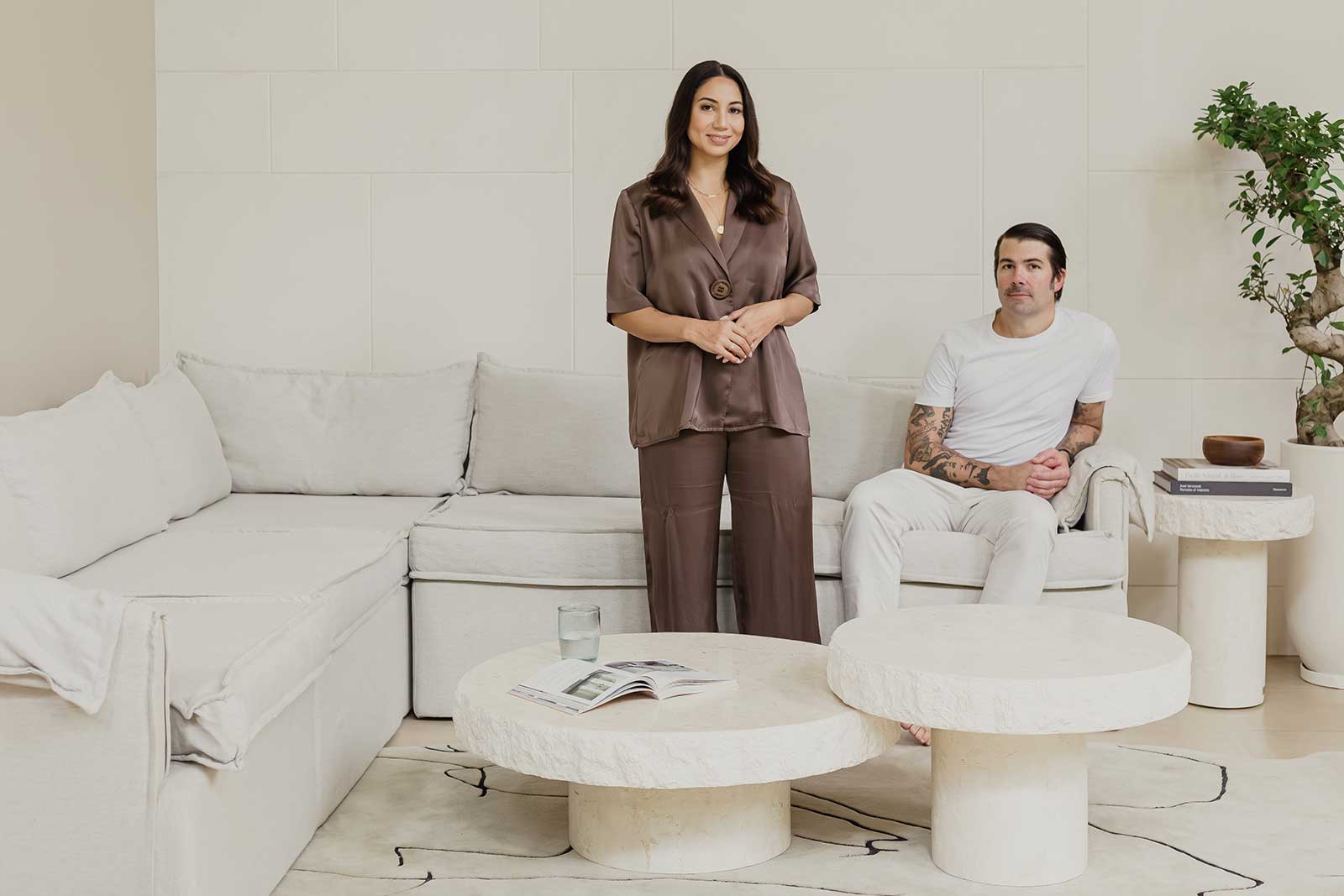
Steffanie Ball discovered fossil stone furniture several years ago when she was looking to redecorate her house in Melbourne, Australia. She began scouring vintage shops when nothing that was currently on the market appealed to her. En Gold began as an Instagram account, selling secondhand pieces. “I was searching the entire Australia for fossil stone, I couldn’t get enough of it,” she says. “Although there were a lot of misconceptions about [fossil stone furniture] because I kept getting this impression that they were originally from Italy or France.”
One day, she found a piece that was labeled “Made in the Philippines.” Being Filipino (her mother is from Bicol), the discovery sparked something inside her. After searching online, Steffanie found Jerry Caniza, a Filipino craftsman who owns the Cebu workshop that now produces En Gold’s pieces. Jerry, it turned out, worked on some of the very pieces that Steffanie was collecting. Three decades ago he produced fossil stone furniture for export, but most of them were labeled “Made in France” or elsewhere, obscuring their true origins.

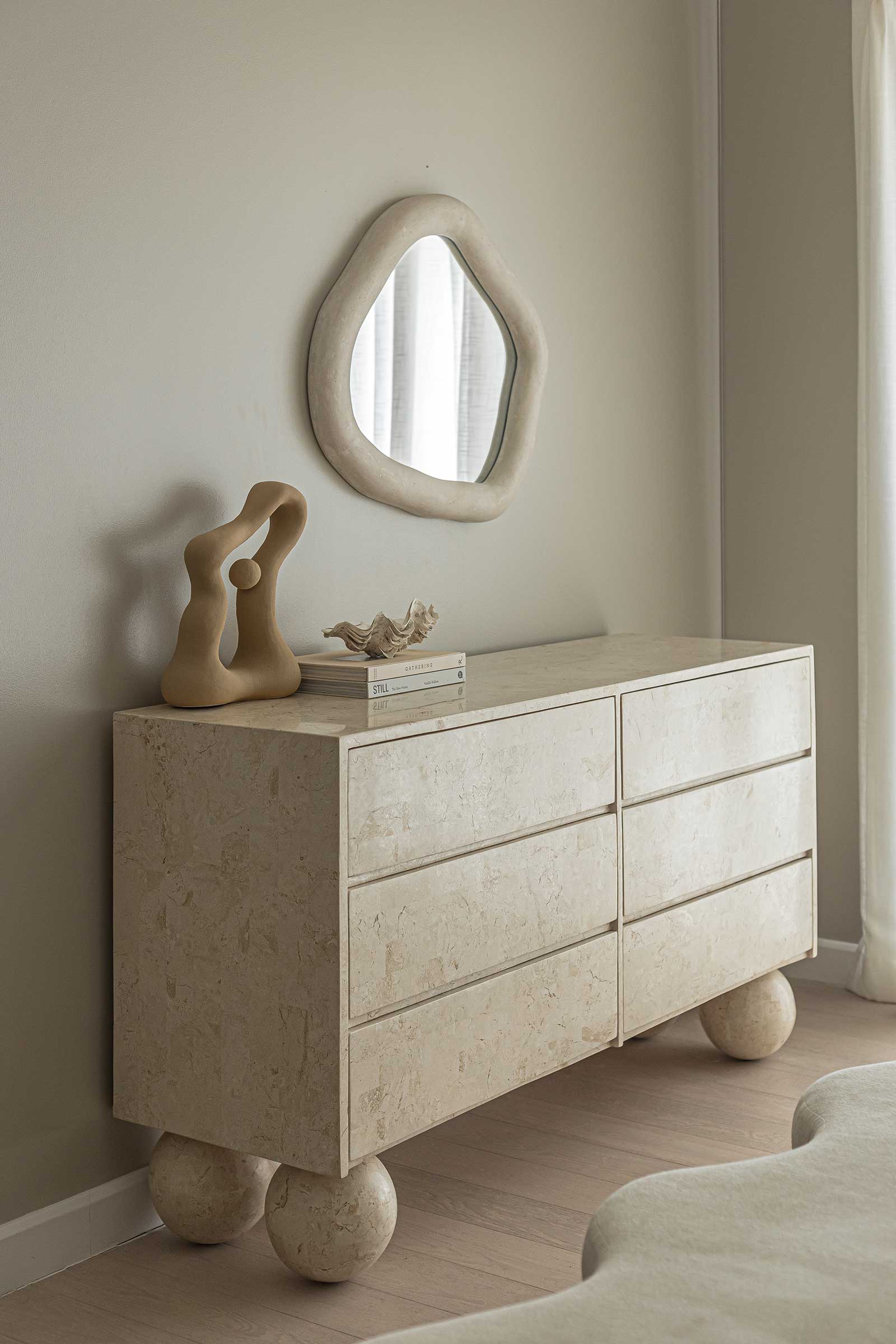
With its distinct aesthetic, fossil stone furniture became very popular in places like Florida and Italy from the ’80s to the ’90s. But business for the Cebu manufacturers declined significantly when global tastes changed and exporters stopped placing orders. Dozens of workshops in Cebu had to close down. Steffanie was struck with an idea—what if they could revive some of the old designs? And that was how her and Jerry’s partnership began in 2020.
“We have the opportunity to reintroduce the world to fossil stone furniture. But this time we’re going to really make it known and clear that this is a native Filipino material, only found in Cebu, nowhere else,” Steffanie says. Customers who visited her showroom in Melbourne would claim that their grandmother had the same table, but made in Italy. Or there are those who assumed that the pieces are made in the Philippines because of cheap labor. “I’m like, ‘No, it’s made in the Philippines because it’s a Filipino craft,’” she says. “I wanted to change this [mindset] and really celebrate our artisans and our craftsmanship.”

Last year, Steffanie made the decision to move En Gold’s head office, and her own family, to Cebu to be closer to the workers, those who quarry the stone and those who craft the furniture. En Gold quarries in Carmen (hence the name fossil stone, not Mactan stone), and Steffanie describes how their operations strive to be as responsible as possible. “When you look at other marble quarries, they’re very big. There’s lots of machinery, they’re excavating out of the earth. What’s different about our stone quarry is that it’s hand cultivated. We just take what is needed, so it’s very respectful to the environment.”
The limestone is ancient, chalky and porous, and on its surfaces you can see skeletal traces of marine organisms like coral and mollusks. After being cut into chunks, the stone is carved into tiles. At the carpentry workshop, wood and fiberglass molds are created, on which pieces of the stone are set. The artisan then sands and shapes the tile to fit the form. Each piece is unique with its different markings, from the natural irregularities of an organic sediment built up over millennia, to the manual finishing touches done by hand.
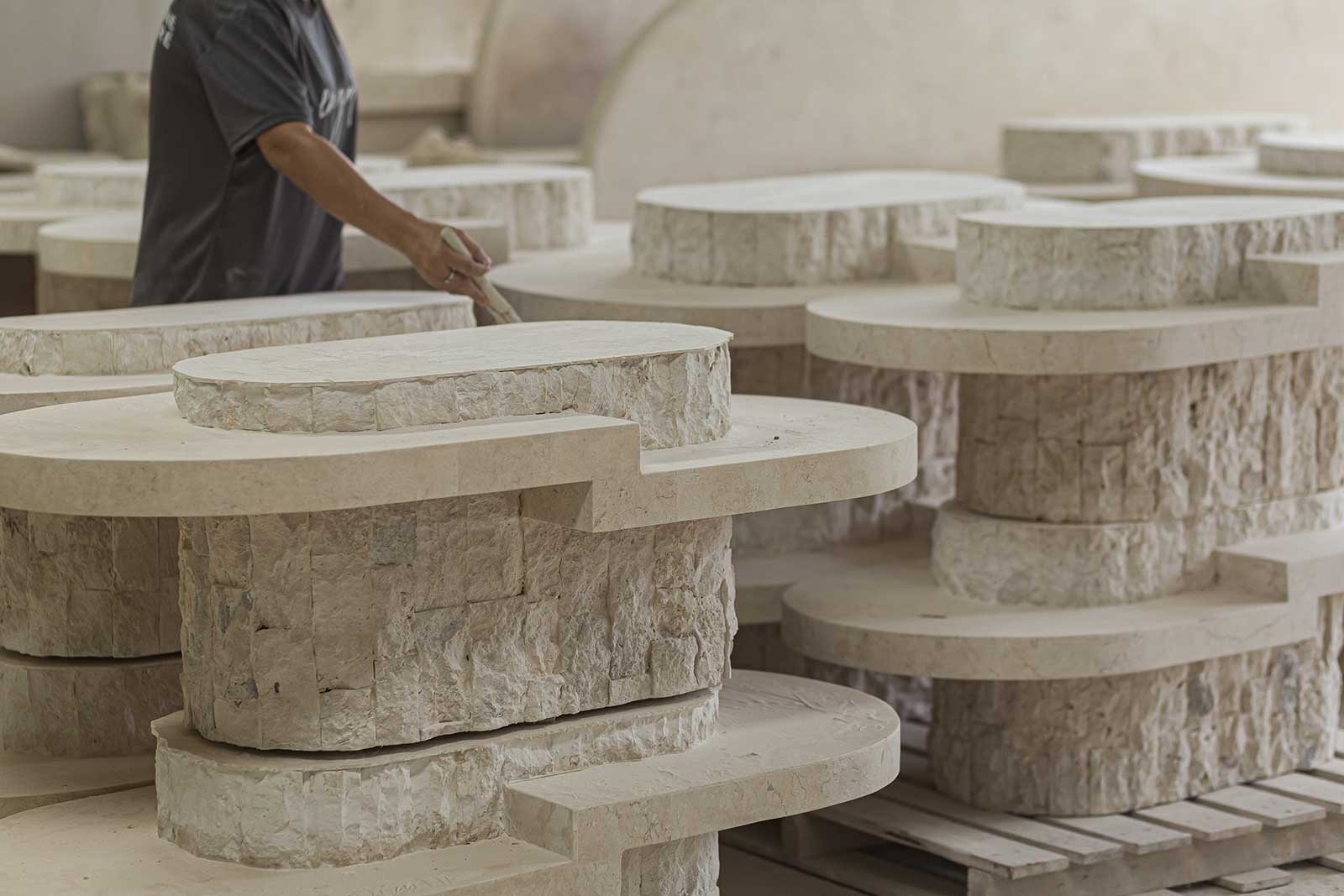
With limestone being a finite resource, Steffanie ensures that nothing goes to waste. “I saw the wastage in some of the stone masonry workshops, and there was just so much stone getting thrown away because of cracks and things like that,” she says. “But in ours, we carve the stone into tiles so every last piece of the stone is used, and if you get a crack, it’s okay because you can reshape that tile and still use it.” En Gold has begun to use these little chips in its new Stonecast outdoor collection, where the bits and pieces have been powdered down to create a putty that can be rendered and laid over the furniture piece. “We’ve got such minimal waste, we’re able to utilize every last piece. I think that’s something that’s quite innate to Filipino culture, right?”

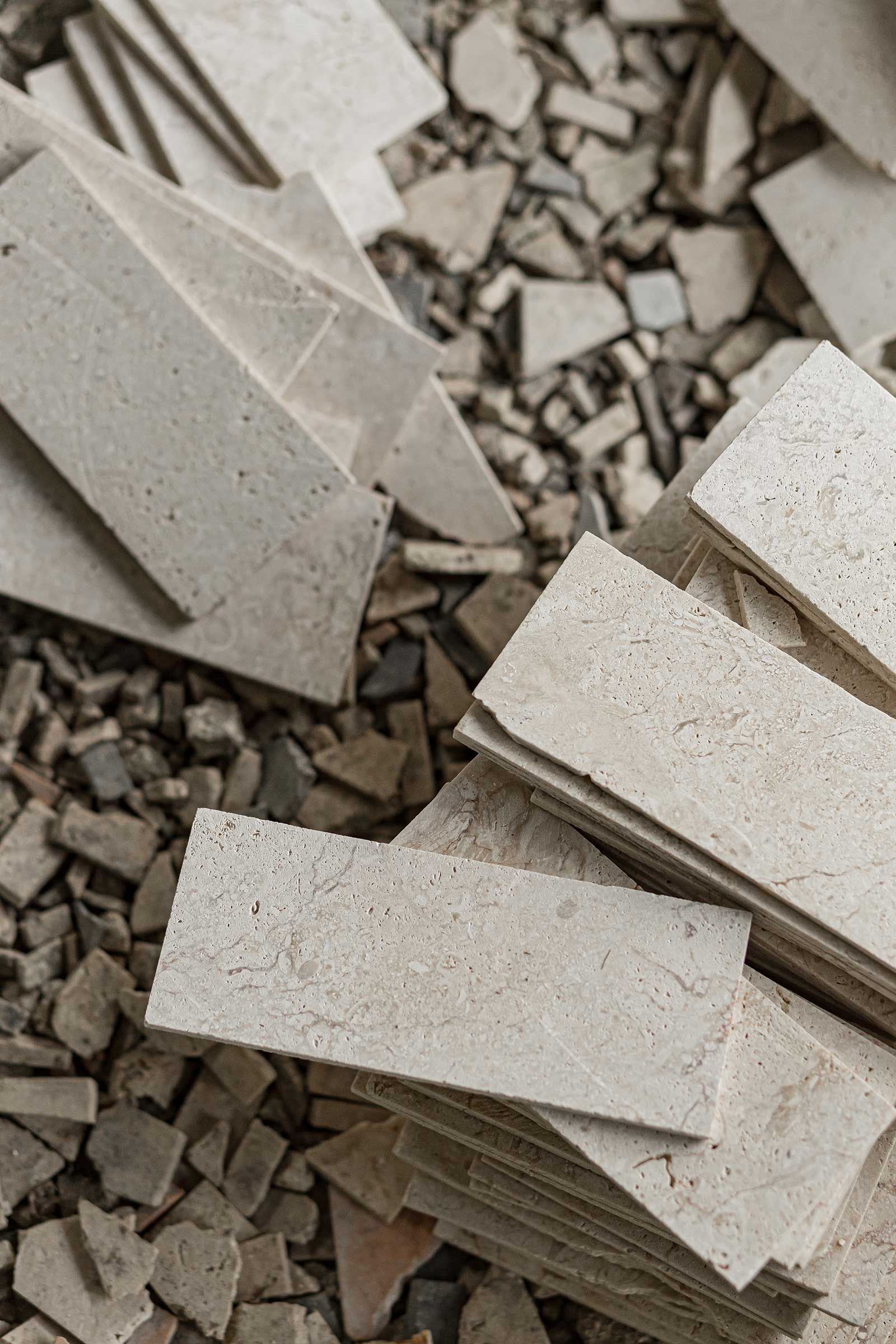
Steffanie can proudly say that En Gold has reignited the fossil stone furniture industry, generating over 100 jobs since the pandemic, for people who have not been able to work for the last 15 to 20 years. “They’re now working with En Gold and they’re producing furniture again. That has been such an inspiration to me to create longevity because I see full generations working in our workshop,” she says, sharing that her own cousins are employed at the workshop and that her business partner Jerry’s son is their production manager.
Longevity is also part of its design philosophy. Steffanie does not want her craftspeople’s livelihoods subjected to the same trend cycles that affected them in the past. “That prompted me to really consider our designs and try to create sustainable designs in the sense that they would be timeless and not overly designed where people might get tired of them,” she says. “There’s beauty in its simplicity.” The various En Gold collections all have a pared back, sculptural quality that bring the different stone textures and hues to the fore, whether they are a creamy white, a smoky grey, a woody brown, or the classic salmon-colored stone with fossilized etchings.


As a way to give back to the community in Carmen, Steffanie started the Hiraya Foundation soon after En Gold’s business started growing. The foundation holds initiatives like feeding programs, donation drives, and support for school children. When Typhoon Odette hit Cebu in December 2021, En Gold donated 100 percent of its Boxing Day sales profits to Waves for Water Philippines. Steffie says that she “didn’t start this business intentionally. Life just led me on this journey and connected me back to my roots, and then allowed me an avenue to start a nonprofit foundation to support these regions.”
Last December, En Gold collaborated with Romblon-based resort owner and slow-living proponent Vianca Soleil on an object: a stone vase with black iron handles that snake up on each side. Proceeds benefit the elementary school children of Puro Island, where Vianca lives. Both women come from an interior design background, and though their approaches can be different, they found the process to be complementary. “As someone who is always moving a million miles a minute, it was refreshing to work with another creative who encouraged me to slow down and really consider the design closely until we got it just right,” Steffanie posted on IG.
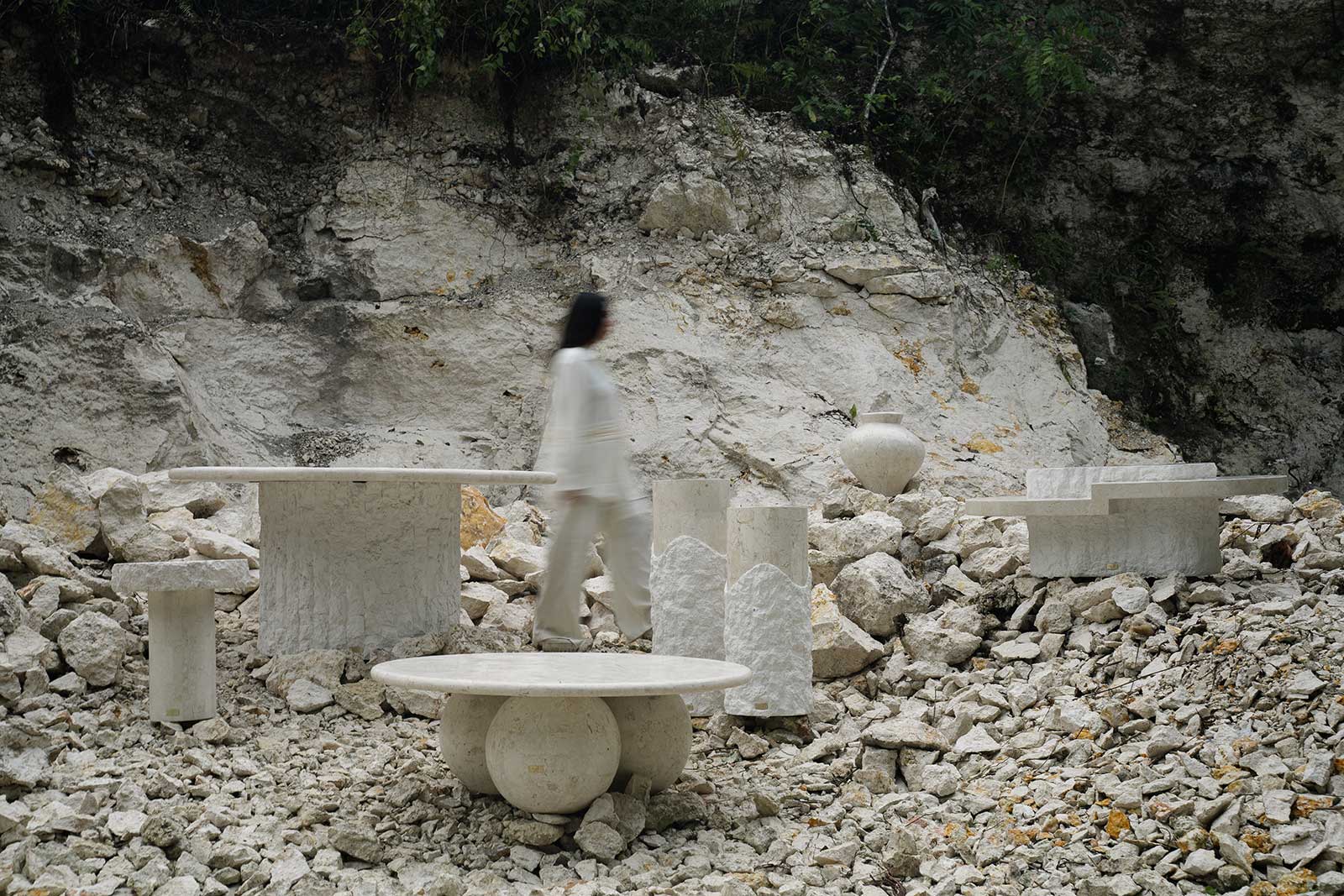
Each piece En Gold produces comes with a booklet telling the story of the stone, from quarry to production floor, each step honed by hand. “The customer can feel the connection and the integrity behind the product,” Steffanie says, pointing out how they develop a deeper appreciation for the craft when they know how the furniture was formed and how its raw materials were gathered. One can imagine a new owner of an En Gold heritage table on the other side of the world, running their hands over its rough-hewn surfaces and absorbing the millennia of work, whether by nature or by human, that went into its parts.
In Cebu, Steffanie is surrounded by other native materials and crafts like capiz, abaca, and seagrass. Being close to her production team enables Steffanie to keep designing and creating, working with the environment they draw inspiration from. “Jerry and I talk about this being our legacy and this being so much more than just me,” she says. “It’s not my story—it’s the story of the craft, and I’m just sharing it.”
